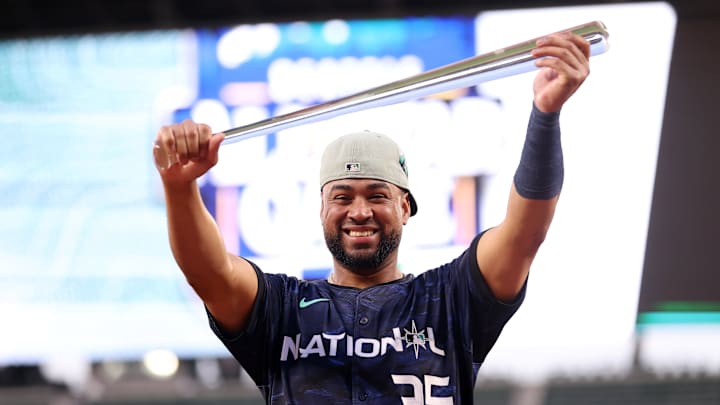In July, Major League Baseball will escape the monotony of the regular schedule to honor the season's best performers in the annual All-Star Game at Globe Life Field in Arlington, Texas.
That event has turned into MLB All-Star Week, with festivities that include baseball-inspired events, including a celebrity softball game. The week culminates with the 94th Midsummer Classic, when American League and National League dream teams will battle it out in the summer heat.
The All-Star Game roster is intended to feature the best players in baseball, or at least players who are widely celebrated for excelling during the season. In some cases, some players are unaninmously considered to be guaranteed All-Stars — it's hard to argue that Los Angeles Dodgers superstar Shohei Ohtani doesn't belong in the All-Star dugout. In other cases, "best” may be subjective — the MLB All-Star voting process gives fans a considerable amount of influence.
The MLB-All Star roster must be decided by a vote, one that’s starkly different from the closed ballots reserved for Hall of Fame candidates. All-Star voting is largely decided by a popular vote that includes all available MLB fans, aside from a few key positions decided by the MLB Commissioner’s Office.
Here’s how MLB All-Star voting works
MLB All-Star voting is broken up into two phases: Phase 1 and Phase 2.
During the first phase, MLB fans worldwide are able to nominate and vote on the All-Star starting roster for a period of about two weeks in June. Fans can cast up to five ballots every 24 hours on designated MLB sites.
Fans are able to vote for players at every position except for the starting pitchers reserves, who are determined separately.
Phase 1
When Phase 1 comes to a close, the two players who received the most votes at each position, plus the top six outfielders, are publicly announced on MLB Network. The top vote recipient at each position is automatically added to the All-Star roster, while the other top vote-getters move onto Phase 2. This applies to the outfielders as well, with the highest-voted outfielder in each conference securing a spot on the All-Star roster.
Phase 2
In Phase 2, fans get a narrow 72-hour window to determine the remainder of the All-Star roster. Fans may only vote once every 24 hours, and votes from the first phase don’t carry over to Phase 2. The top two players at each position are pitted head-to-head to determine the starting lineup for both laegues. In the outfield, the top six nominees get a spot.
As for pitchers, the NL designated hitter, and reserve players, the remaining players are determined via “Player Ballot” selections made by the Commissioner’s Office. There are 32 roster spots for each conference: 20 reserve position players and 12 pitchers. Player ballots decide selections for 16 NL players and 17 AL players, while the Commissioner’s Office decides the remaining 8 NL players and 6 AL players. Per current rules, MLB must ensure every club is represented by at least one All-Star selection at this portion of the voting process.
Once all the voting is complete, the MLB All-Star roster is announced, usually in early July. The MLB has a thorough process that allows fan voices to be heard while attempting to include every MLB club in All-Star festivities. Fan ballots haven’t always been perfect — Cincinnati was accused of stuffing the ballot box once upon a time — but the league has refined the process to ensure fair elections.
MLB All-Star Week will begin with the HBCU Swingman Classic on Friday, July 12 and conclude with the All-Star Game on Tuesday, July 16.
